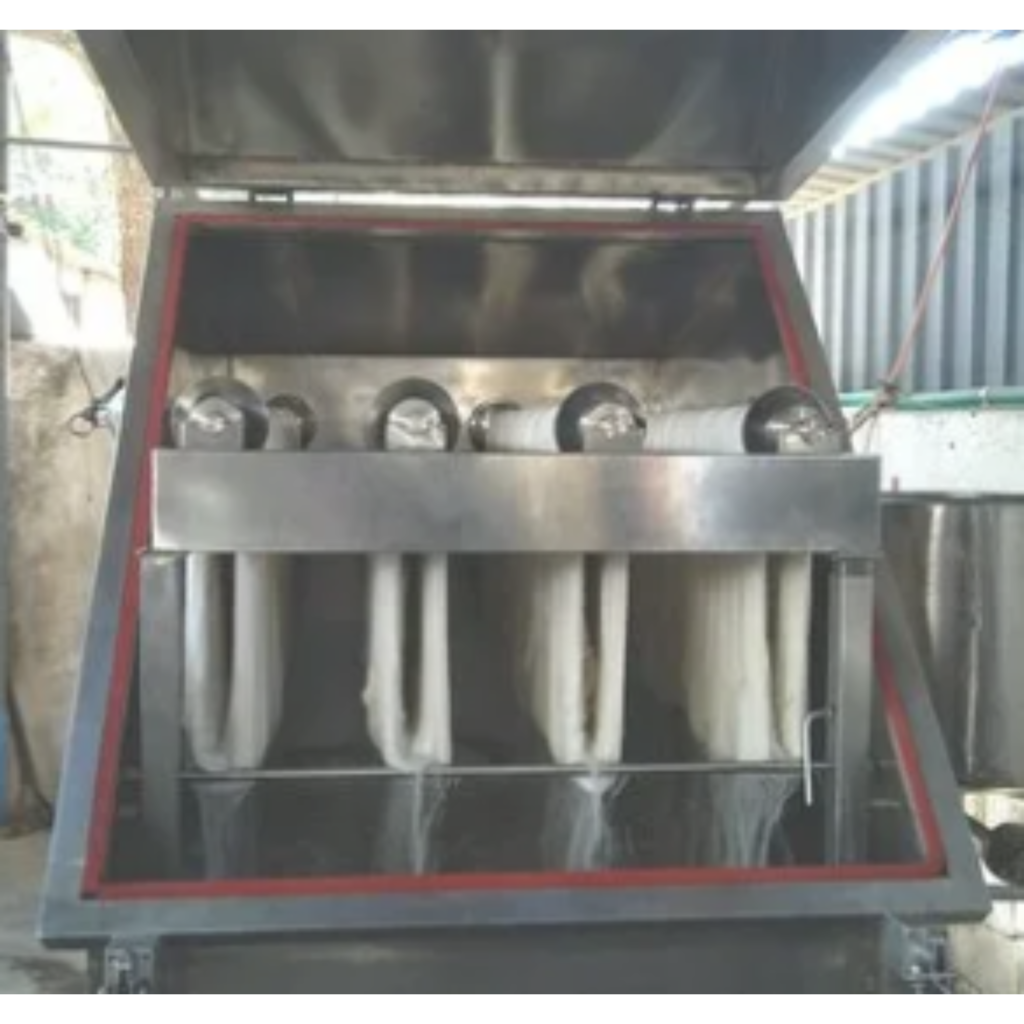Textile Technology/Products
Hank Dyeing Machine
Working Principles: A Hank Dyeing Machine is a textile dyeing apparatus used primarily for dyeing yarns or threads in hank form. Hank dyeing is a common method in the textile industry for achieving uniform and consistent coloration of yarns. The working principles of a Hank Dyeing Machine involve the following key aspects:
Design: The machine consists of a cylindrical or rectangular vessel designed to hold multiple hanks of yarn. The vessel is typically made of stainless steel and is equipped with a heating and circulation system.
Preparation: Yarn is wound into hanks, which are loosely coiled loops of yarn, and loaded into the dyeing vessel. The hanks are secured to prevent tangling during the dyeing process.
Dye Bath Preparation: A dye bath is prepared by adding water, dye stuff, and any necessary chemicals to the dyeing vessel. The dye bath is heated to the desired temperature using a heating system.
Dyeing Process: The hanks of yarn are immersed in the dye bath, ensuring that they are fully submerged. Agitation, often achieved through a circulation pump, helps in even distribution of the dye liquor and prevents uneven dyeing.
Dyeing Time: The hanks remain in the dye bath for a specified duration, allowing the dye to penetrate the yarn fibers and achieve the desired color.
Rinsing and Finishing: After the dyeing process, the hanks are removed from the dye bath, rinsed to remove excess dye, and subjected to post-treatment processes such as washing, drying, and finishing.
Quality Control: The color and quality of the dyed yarn are carefully monitored and controlled to ensure uniformity and consistency.

Advantages:
Uniform Dyeing: Hank dyeing machines are designed to achieve uniform and consistent coloration of yarns, ensuring high-quality results.
Flexibility: They can handle a variety of yarn types, including natural and synthetic fibers, and are suitable for both small and large production batches.
Color Matching: Hank dyeing allows for precise color matching and customization according to customer specifications.
Reduced Waste: The ability to dye smaller quantities of yarn reduces waste compared to dyeing large lots of yarn that may not be used.
Ease of Handling: Hank-dyed yarns are easier to handle and inspect compared to package-dyed yarns, making them suitable for specialty and high-end applications.
Disadvantages:
Time-Consuming: Hank dyeing can be a time-consuming process, especially for large quantities of yarn, compared to package dyeing methods.
Labor-Intensive: Loading, unloading, and securing hanks of yarn can be labor-intensive, especially in large-scale production.

Applications: Hank Dyeing Machines are commonly used in textile industries for various applications, including:
Apparel: Dyeing yarns for clothing, fashion, and apparel production.
Home Textiles: Dyeing yarns for bed linens, towels, and upholstery fabrics.
Industrial Textiles: Dyeing yarns for technical and industrial textiles.
Handcrafts: Dyeing yarns for knitting, crocheting, and other handcrafts.

Summary: Hank Dyeing Machines are specialized equipment used for dyeing yarns in hank form, ensuring uniform and consistent coloration. This method is preferred for achieving precise color matching and customization. While they offer advantages in terms of uniform dyeing and flexibility, they can be time-consuming and labor-intensive, especially for large production batches. Hank dyeing is widely used in the textile industry for producing dyed yarns for a variety of applications, from apparel to industrial textiles.


 Sales & Marketing:
Sales & Marketing:  Service Supports:
Service Supports:  Website:
Website: 